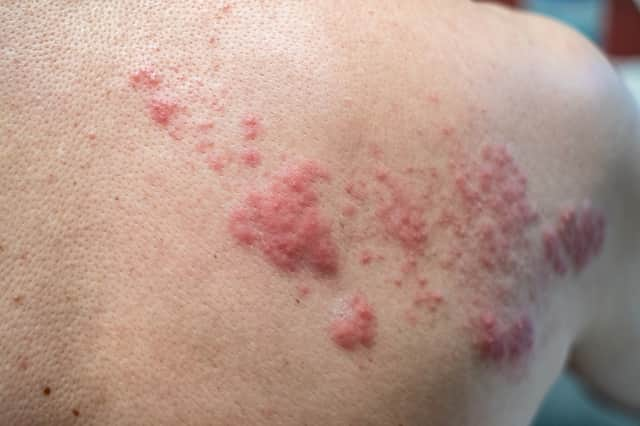Shingles: symptoms including rash, is there a vaccine, is it contagious, what is it and treatment explained


Due to having shingles, Holly Willoughby will be taking a "few days" off from hosting This Morning this week. Willoughby and her co-host of the ITV talk show Phillip Schofield were both away over the Easter break.
In an Instagram post, Willoughby said: “Hi… Just to let you know I may be away for the rest of the week as I have shingles… I’ll be back as soon as I’m better. Huge love, Holly.”
Advertisement
Hide AdAdvertisement
Hide AdOn Monday (17 April), This Morning said that The Hit List presenter and former The Saturdays singer Rochelle Humes would be in the studio alongside Schofield to host.
But what exactly is shingles? What are the symptoms of the condition, and what steps can you take to make sure you don’t suffer from it yourself? Here is everything you need to know about it.
What is shingles?
Shingles is a viral infection that causes a painful rash. It is caused by the varicella-zoster virus, which is the same virus that causes chickenpox. After a person recovers from chickenpox, the virus remains inactive in the nervous system, and can reactivate years later, causing shingles.
Shingles typically starts with a burning or tingling sensation on one side of the body or face, followed by a painful rash that forms blisters. The rash can last for several weeks and may be accompanied by fever, headache and fatigue.
Advertisement
Hide AdAdvertisement
Hide AdAccording to the Shingles Support Society (SSS), around 194,000 people in England and Wales get shingles every year. Shingles is more common in older adults and people with weakened immune systems. A healthy immune system can be maintained through a healthy diet, regular exercise and good sleep hygiene.
Treatment for shingles typically involves antiviral medications to help reduce the severity and duration of symptoms, as well as pain relievers and topical creams.
It is also recommended to get vaccinated against shingles to prevent the condition or reduce the severity of symptoms. The vaccine is recommended for adults aged 50 and older, and is available to people in their 70s through the NHS.
What are the symptoms of shingles?
The symptoms of shingles can vary from person to person, but typically a burning or tingling sensation on one side of the body is the first sign of shingles, followed by a painful rash with blisters. Although the rash - which often presents as a single stripe or band - can develop anywhere on the body, it typically develops on the neck, face or torso.
Advertisement
Hide AdAdvertisement
Hide AdSome people with shingles may experience a headache, especially if the rash appears near the eye, which can also cause sensitivity to light and blurred vision. Others may experience flu-like symptoms, such as fever, fatigue and muscle aches.
After the rash has cleared, some people may continue to experience pain in the affected area, known as postherpetic neuralgia. Although shingles is usually not life-threatening, it can be very painful and may cause complications in some people.
How can shingles be prevented?
Shingles can be prevented by getting vaccinated and maintaining a healthy immune system, as it is more common in older adults and people with weakened immune systems. You can boost your immune system by eating a healthy diet, getting regular exercise and reducing stress.
Shingles is caused by the varicella-zoster virus, which is highly contagious. You can reduce your risk of getting shingles by practising good hygiene, such as washing your hands frequently, avoiding close contact with people who are sick and keeping the affected area of your skin clean.
Advertisement
Hide AdAdvertisement
Hide AdBut the best way to prevent shingles is to get vaccinated with the shingles vaccine, which is recommended for adults aged 50 and older, and is available to people in their 70s through the NHS.
People are urged to call 111 or visit the doctor as soon as they suspect shingles as they might need medication. For treating shingles at home, the NHS advises taking paracetamol, keeping the rash clean and dry, wearing loose-fitting clothes and using a cool compress a few times a day. It warns against letting dressings or plasters stick to the rash or using antibiotic cream.
Comment Guidelines
National World encourages reader discussion on our stories. User feedback, insights and back-and-forth exchanges add a rich layer of context to reporting. Please review our Community Guidelines before commenting.
